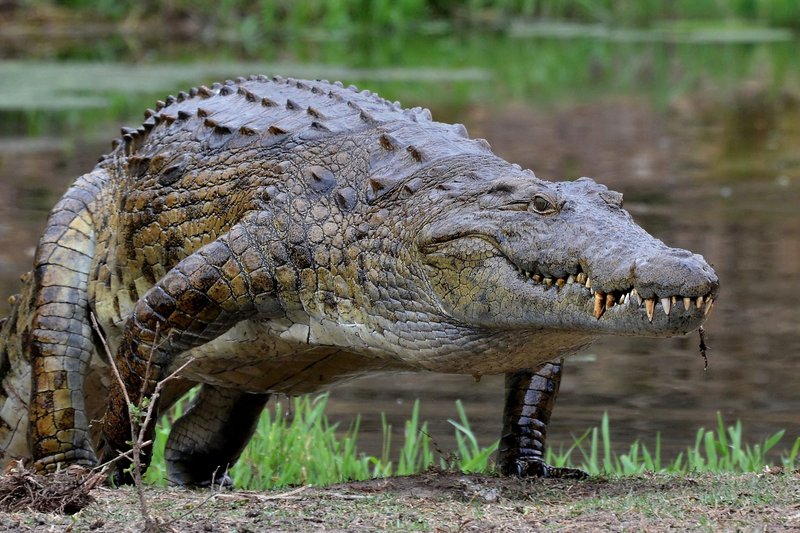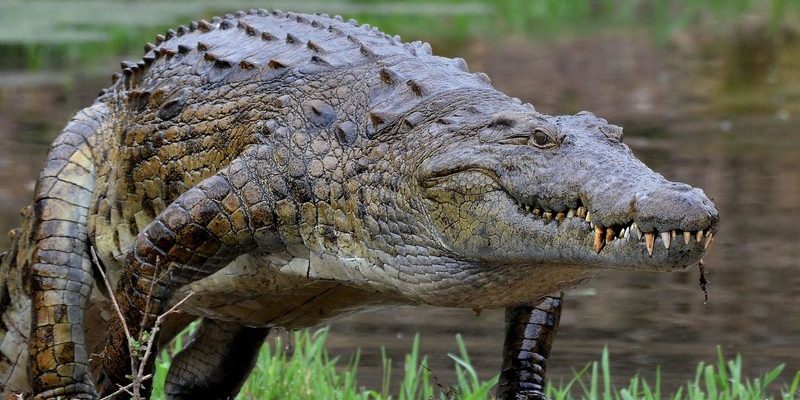
The Nile crocodile’s survival strategies are a fascinating blend of physical adaptations and behavioral traits. Just like how some people can endure cold winters with little more than a warm coat, Nile crocodiles have their own set of tools that allow them to navigate extreme environments, whether it’s the searing heat of the African sun or the scarcity of food. So, let’s dive into their world and explore the incredible ways these reptiles make the harshest conditions feel like home.
Physical Adaptations for Survival
One of the key factors in the Nile crocodile’s survival is its remarkable physical adaptations. These creatures are built for both land and water, which is vital for their lifestyle.
Body Structure: Their bodies are long and streamlined, enabling them to swim swiftly through water. With powerful tails, they can launch themselves forward, making them efficient hunters. Imagine a torpedo gliding smoothly through the deep; that’s the Nile crocodile!
Skin and Camouflage: The crocodile’s rugged, scaly skin helps it withstand harsh environments. It not only acts as armor against predators but also provides protection from extreme temperatures. Plus, the dark, mottled patterns on their skin allow them to blend into riverbanks and murky waters. They can literally become invisible, waiting patiently for unsuspecting prey to come near.
Adaptations to Hydration and Temperature
Crocodiles have an impressive ability to manage their hydration and temperature. Unlike many reptiles, they can tolerate higher levels of salt in their bodies, thanks to specialized glands that filter out excess salt. This is crucial for living in environments where freshwater may not always be abundant.
When it comes to staying cool, Nile crocodiles bask in the sun to warm up but will often submerge themselves in water to prevent overheating. They’re like little living thermostats, adjusting their bodies to suit their needs. This ability to regulate their body temperature is key to thriving in environments that can swing from scorching hot to surprisingly cool.
Behavioral Strategies for Survival
Behavior plays a crucial role in how Nile crocodiles manage to survive in tough conditions. They have some intriguing habits that help them find food, stay safe, and adapt to their surroundings.
Hunting Techniques: Nile crocodiles are ambush predators. They often hide beneath the surface of the water, their eyes and nostrils just peeking above, waiting for the perfect moment to strike. This patient hunting method ensures that they expend minimal energy while maximally increasing their chances of a successful catch. It’s like waiting for the perfect shot in photography; they know that timing is everything.
Social Behaviors: While they might seem solitary, Nile crocodiles can actually exhibit some social behaviors. During the breeding season, males will engage in displays of strength to attract females. They can also be seen basking together in groups, which helps them conserve heat. This social side aids their survival by allowing them to share warmth and protection against predators.
Diet and Adaptability
Nile crocodiles are opportunistic feeders, meaning they eat what’s available. Their diet is diverse, ranging from fish to mammals, and even birds. This adaptability is a huge advantage in fluctuating environments.
Feeding Habits: They tend to hunt primarily at dawn and dusk, taking advantage of the low light to ambush unsuspecting prey. Their strong jaws can exert immense pressure, allowing them to catch and hold onto their food effectively. Imagine having a toolbox where each tool is perfect for a different job—that’s their jaw structure for you!
Scavenging: They’re not picky eaters either. If food is scarce, Nile crocodiles won’t hesitate to scavenge carrion. This flexibility in their diet allows them to survive during tough times when fresh prey is hard to come by.
Habitat and Range
Understanding where Nile crocodiles live gives insight into how they adapt to different environments. These reptiles are found throughout sub-Saharan Africa, in rivers, lakes, and sometimes even coastal waters.
preferred habitats: They thrive in warm, tropical climates but can also handle a range of habitats, including swamps and estuaries. Their ability to burrow into mud can help them survive the dry season when water sources dwindle.
Territorial Behavior: They’re known to be quite territorial, especially males. During different seasons, they’ll stake out their claims to prevent clashes over resources. This territorial instinct helps them secure adequate food and breeding spots, which is essential for survival.
Dealing with Human Interaction
As habitats shrink and human populations expand, Nile crocodiles face new challenges. Understanding how they cope with human interaction is vital for their long-term survival.
Adaptation to Change: Some Nile crocodiles have adapted surprisingly well to living near human developments. They may utilize surrounding agricultural areas for food, showing their flexibility in adjusting to new environments.
Conservation Efforts: Numerous programs aim to protect these magnificent creatures and their habitats. By educating people about the importance of crocodiles in the ecosystem, we help create a sustainable future for them. Ultimately, preserving their environment ensures that they can continue to thrive in the wild.
In a world filled with challenges, the Nile crocodile’s ability to adapt and survive is nothing short of remarkable. From their powerful physical traits to their clever behaviors, they truly embody resilience. By learning about these creatures, we can appreciate their role in the ecosystem and the importance of conserving their habitats.
So next time you think about survival in extreme conditions, remember the Nile crocodile and its incredible journey through life. They’re not just survivors; they’re masters of adaptation in one of the most unforgiving environments on Earth.

